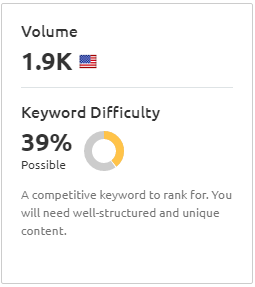Generating new content marketing ideas consistently can seem hard. And to be honest, sometimes it is.
But there are some tricks you can use to make it easier. The sales training blog posts featured in this “What Does Good Content Marketing Look Like?” post are great examples of that.
One piece is perfect for the earliest stages of the buyers’ journey, when potential sales training customers are beginning to weigh their options. The other is ideal for the very end, when a decision is near. But both are illustrations of creating new content without spending too much time searching for a new topic.
Let’s take a look …
Example 1: What Works Best? Call, Email, Text or … ?
Source: MEDDIC Academy
What This Post Does Well
With this post, MEDDIC Academy has created a smart, engaging piece of awareness stage content that takes advantage of a classic tactic for idea generation: Hop on a popular topic.
You don’t have to spend hours dreaming up new content ideas. It often pays to think “What do people in my field talk about all the time?” and just go with that.
In this case, Semrush tells me that “call or email?” is popular — on average, there are 1,900 monthly searches for that keyword in the U.S.

But I am sure the author, MEDDIC Academy founder Darius Lahoutifard, knew he was addressing a hot topic without consulting an SEO tool.
The post addresses a common dilemma for sales professionals — especially early-career professionals who might also be candidates for sales training. That’s what makes this good awareness stage content.
Additionally, it’s detailed and comprehensive. A reader who finds this piece should be left with a good impression — and reason to come back to learn more about sales from MEDDIC.
How This Post Could Be Improved
This post, as valuable as it is, strays at times from its focus on helping salespeople decide the best way to contact a prospect. Take this sentence, for instance:
“In my observation, the biggest mistake that most customer-facing people make, is not taking into consideration the client’s preferred channels.”
This is a good point, but it’s addressing a more general issue: How anyone in a professional role thinks about contacting other professionals.
I suggest creating content that speaks directly — and exclusively — to your ideal customer. In this case, it’s less-experienced sales professionals. Keep the focus there.
Example 2: Victory Lap Alumni Spotlight
Source: Victory Lap
What This Post Does Well
This post is part of Victory Lap’s “Alumni Spotlight” series, in which they feature a sales professional who came through their program and has seen success since.
It’s like a testimonial, but instead of focusing on what Victory Lap taught alum Norman Edwards, it showcases results. And in many ways, that’s a better approach — potential customers are more interested in what they’ll get out of your service than in how it works.
It seems likely that Victory Lap reached out to Norman with a simple form, asking him to fill it out and return it with a head shot. And they turned it into this post — in what I imagine was a short amount of time.
I assume Victory Lap has more of these spotlights in the works. It would be a stress-free way to fill slots on their content calendar.
And I should add — this sort of spotlight is good decision-stage content. A sales professional who is considering applying to Victory Lap’s program will want to see proof that it’s worth the effort and expense before making the commitment. Here’s real evidence that can be confirmed quickly by checking a LinkedIn profile.
How This Post Could Be Improved
As I noted above, focusing on the benefits Norman reaped after his training is smart. If I had to add one question to the spotlight, I would ask “Why did you decide to enroll in Victory Lap?”
Norman’s answer could provide an additional benefit to highlight, or — even better — address a reservation a prospect might have as they decide whether they should apply.

